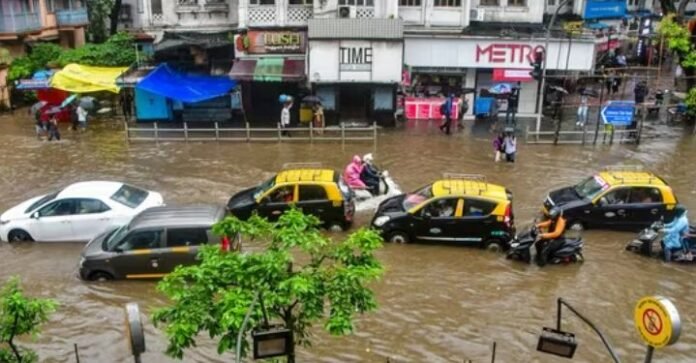Mumbai is in crisis mode once again, grappling with back-to-back monsoon storms that have led to a red alert issued by the India Meteorological Department (IMD). As heavy rainfall pounds the city and the tides rise to dangerous levels, civic agencies are racing to prevent another catastrophic urban flood.
The Perfect Storm: Rain + High Tide
This week’s extreme weather has seen Mumbai pelted with relentless rain even as the sea threatens to swallow its coastal stretches. The BMC has warned that high tide levels in the Arabian Sea—some rising as high as 4.75 meters—could coincide with the heaviest rain spells, leading to a disastrous situation in low-lying neighborhoods.
The city’s primary stormwater drain outlets will be blocked during these high tide hours, making it nearly impossible to evacuate excess water. This leaves vast areas like Chembur, Sion, Kurla, and Dharavi vulnerable to flash flooding.
Flood Control Infrastructure Put to the Test
Flood mitigation projects like the Hindmata underground tanks, robotic drain cleaning systems, and upgraded pumping stations are being tested in real-time. However, citizens report that many of these measures are falling short, with streets turning into rivers within minutes of heavy showers.
Residents are expressing frustration, stating that despite annual promises and crores spent, little seems to change during peak monsoon.
Administrative Response and Closures
On Tuesday evening, the BMC officially closed all municipal offices, with exceptions for emergency services. It also requested private sector cooperation to implement work-from-home policies to reduce commuting strain.
Meanwhile, the education department has declared a city-wide school holiday, cancelling all classes and exams for the day. Universities have postponed their mid-semester assessments scheduled for this week.
Traffic Snarls and Air Travel Disruptions
Mumbai’s roads, always a challenge in the rains, have now become treacherous. With key arteries like the Eastern Express Highway, Sion-Panvel Highway, and LBS Road waterlogged, traffic has ground to a near halt. Over 70 BEST buses have been rerouted or temporarily suspended.
At the Chhatrapati Shivaji Maharaj International Airport, operations continue but with flight delays averaging between 30–90 minutes. Passengers are advised to reach the airport early and check real-time flight status.
Mithi River Near Danger Mark, Evacuations Begin
The Mithi River, a regular flood contributor during monsoon seasons, is nearing its danger mark once again. Continuous rainfall in catchment areas like Powai and Bhandup has led to a rapid rise in river levels.
More than 400 people living along the banks have already been moved to safe shelters, with the help of the NDRF and local police. Civic officials say the situation remains tense and could worsen if rainfall persists.
Residents Urged to Stay Indoors
The BMC has reiterated that citizens should avoid stepping out unless absolutely necessary. Fishermen have been warned not to venture into the sea, and warnings have also been issued for landslides in hilly zones like Ghatkopar, Mulund, and Bhandup.
Emergency response teams remain on high alert, with hospitals, fire brigades, and police stations running on contingency protocols.
Conclusion
With rain clouds showing no signs of retreat, and the sea refusing to calm, Mumbai stands at a crucial juncture. How the city weathers this phase will depend not just on civic preparedness, but also on public cooperation and resilience.

